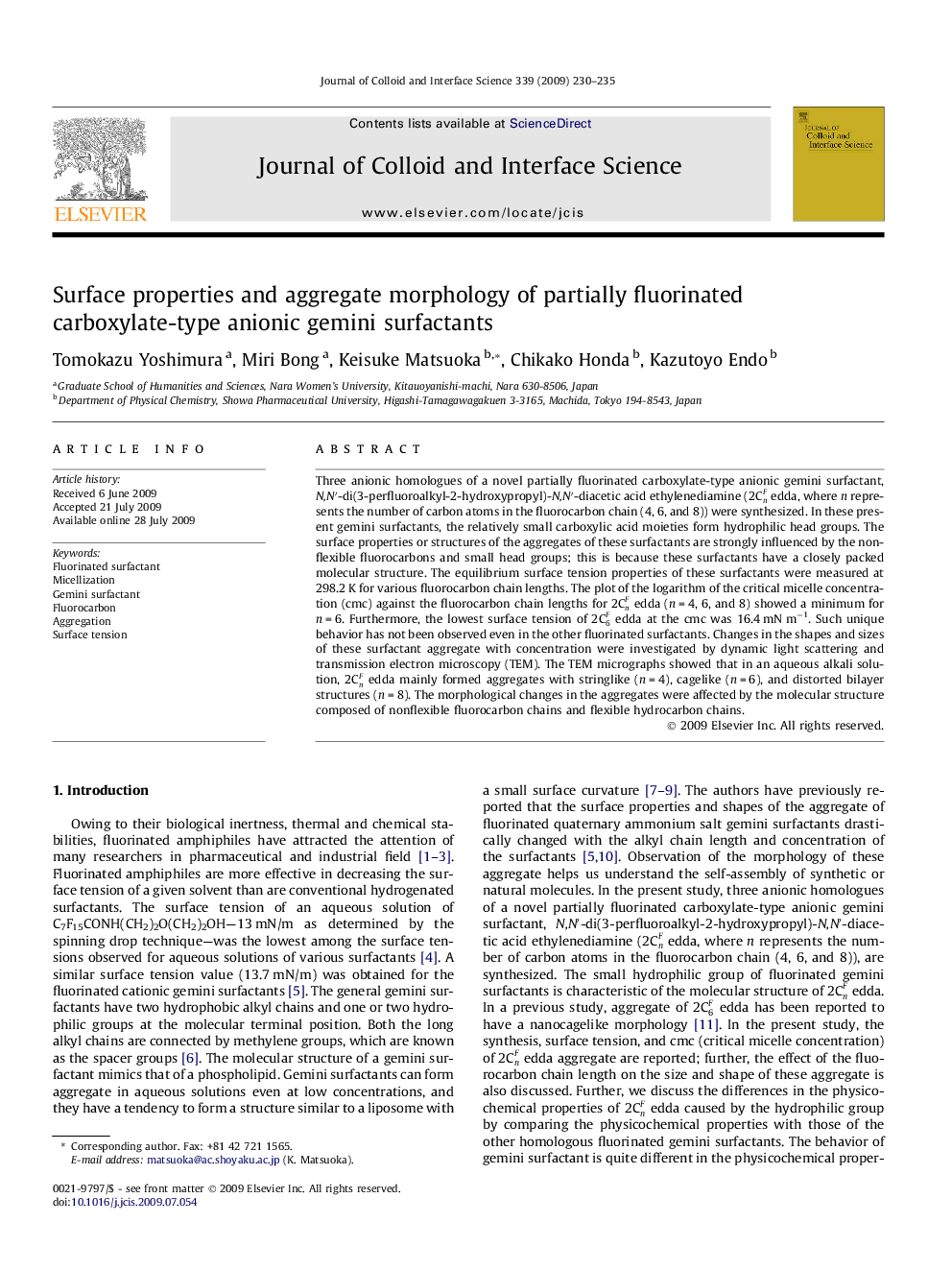| Article ID | Journal | Published Year | Pages | File Type |
|---|---|---|---|---|
| 609992 | Journal of Colloid and Interface Science | 2009 | 6 Pages |
Three anionic homologues of a novel partially fluorinated carboxylate-type anionic gemini surfactant, N,N′-di(3-perfluoroalkyl-2-hydroxypropyl)-N,N′ -diacetic acid ethylenediamine (2CnF edda, where n represents the number of carbon atoms in the fluorocarbon chain (4, 6, and 8)) were synthesized. In these present gemini surfactants, the relatively small carboxylic acid moieties form hydrophilic head groups. The surface properties or structures of the aggregates of these surfactants are strongly influenced by the nonflexible fluorocarbons and small head groups; this is because these surfactants have a closely packed molecular structure. The equilibrium surface tension properties of these surfactants were measured at 298.2 K for various fluorocarbon chain lengths. The plot of the logarithm of the critical micelle concentration (cmc) against the fluorocarbon chain lengths for 2CnF edda (n = 4, 6, and 8) showed a minimum for n = 6. Furthermore, the lowest surface tension of 2C6F edda at the cmc was 16.4 mN m−1. Such unique behavior has not been observed even in the other fluorinated surfactants. Changes in the shapes and sizes of these surfactant aggregate with concentration were investigated by dynamic light scattering and transmission electron microscopy (TEM). The TEM micrographs showed that in an aqueous alkali solution, 2CnF edda mainly formed aggregates with stringlike (n = 4), cagelike (n = 6), and distorted bilayer structures (n = 8). The morphological changes in the aggregates were affected by the molecular structure composed of nonflexible fluorocarbon chains and flexible hydrocarbon chains.
Graphical abstractTEM images of 2CnF edda (n = 4, 6, and 8) aggregates.Figure optionsDownload full-size imageDownload as PowerPoint slide
